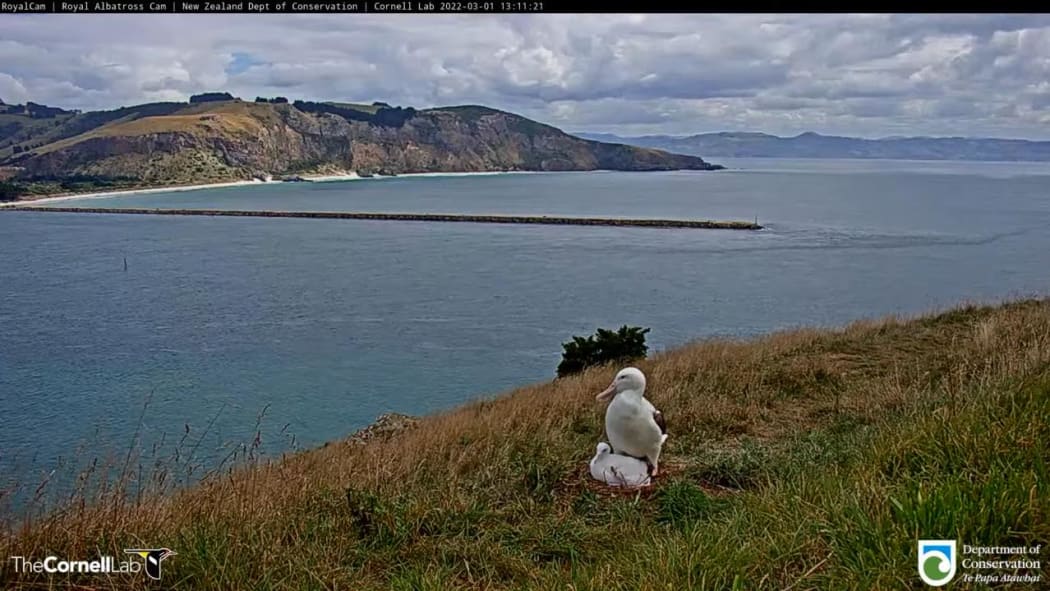The Royal Albatross chick “Q.T.” with parent earlier this year.
Photo: Supplied / Royal Albatross Centre
Stormy weather in Dunedin has been a bonus for at least one resident.
The first albatross chick of the season has taken to the skies – bound for South America.
The Royal Albatross Centre at Taiaroa Head on the Otago Peninsula said it didn’t even get time to name the bird, who will be known by her code, Q.T.
Q.T. is the Royal Cam chick of this season – a collaboration between the Royal Albatross Centre and Cornell University in the US that live steams the chick continuously.
The centre’s Ray Grant says Q.T. is one of 25 chicks that have been doing their pre-flight exercises, but she took everyone by surprise yesterday.
“They stretch out their wings, they’ve been doing little jumps, a doing a bit of yoga, but yesterday when it was stormy as and raining and windy, she just took off, at about 12:54, so emotions are running high at the Albatross Centre.”
Grant said the chicks have high energy, a long gestation period and require extra care from their parents, so each individual is important.
“Each (breeding) pair will have one egg every two years so it takes a long time for them to reproduce. They have to sit on an egg for two months.
“The egg is really thin and if they (the parents) get the temperature wrong by half a degree either too hot or cold, the chick will die.
“For eight months both parents have to be foraging 24/7 to feed the chick, so it’s highly energy intensive for each individual to exist. When anything happens to the chick, it’s very detrimental to the population.”
Grant said the main threats to albatrosses are long-line fishing and plastic.
When plastic decays, it smells like food such arrow squid which is attractive to the birds.
“We’ve been seeing the population increasing, overall. We’ve had 25 chicks on the headlands this cohort.
“It’s really good to see them back here where we’re helping the population.”
Grant said the chicks don’t have practice flights and once they take to the air for the first time, they will head towards South America, but spend the next few years feeding at sea, without touching land.
After five to seven years, the giants return to Taiaroa Head to raise their own families.





















Discussion about this post